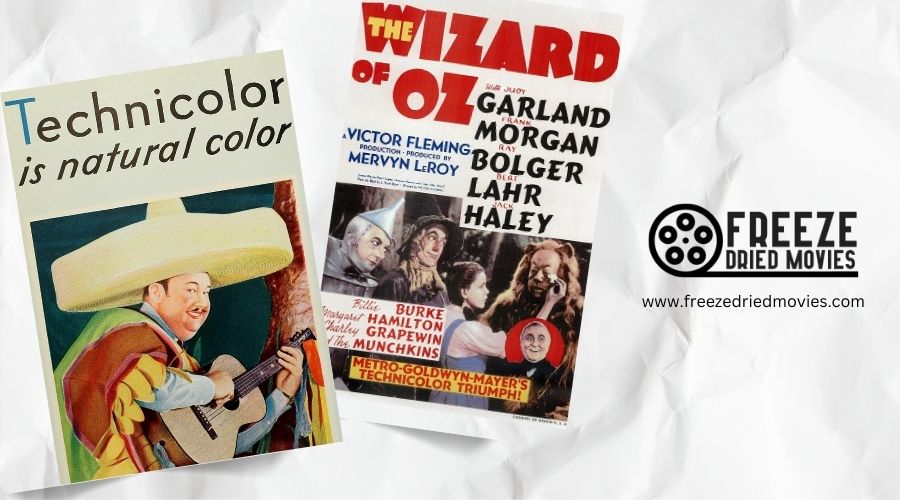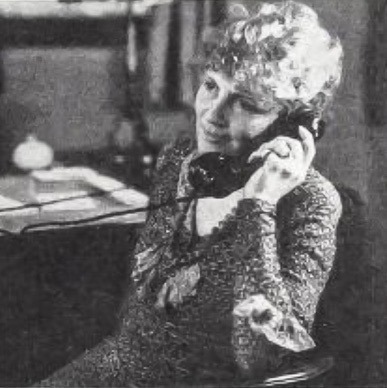Who Invented Technicolor?

Technicolor was invented by Herbert Kalmus, Daniel Comstock, and W. Burton Wescott, who founded the company in 1915. Kalmus served as president and CEO, while Comstock and Wescott developed the revolutionary color process patents. Their breakthrough technology transformed black-and-white films into vibrant, colorful experiences that defined cinema's Golden Age. The team's vision would eventually lead to the iconic three-strip process that brought classics like The Wizard of Oz to life.
Key Takeaways
- Technicolor was invented by three engineers: Herbert Kalmus, Daniel Comstock, and W. Burton Wescott in 1915.
- Herbert Kalmus served as the company's president and CEO, leading Technicolor's business operations.
- Daniel Comstock and W. Burton Wescott focused on developing the technical patents for the Technicolor process.
- The company was initially chartered in Maine in 1915 before restructuring in 1921 as a Delaware corporation.
- Natalie Kalmus, Herbert's wife, significantly influenced Technicolor's aesthetic as color consultant from 1934 to 1949.
Herbert Kalmus: The Visionary Behind Technicolor
When you plunge into the history of color cinema, Herbert Kalmus stands out as the pioneering force who brought the world of black and white films to vivid life. This MIT graduate co-founded Technicolor in 1914, introducing a revolutionary New way to capture motion pictures in stunning color.
Kalmus didn't just invent the technology; he championed it throughout the film industry. After patenting the three-strip color Process in 1915, he persuaded Walt Disney to adopt Technicolor for "Flowers and Trees" in 1932—a decision that earned Disney the first Academy Award for Best Animated Short Film.
Under Kalmus's leadership, Technicolor's three-strip process became the industry standard for over two decades, transforming motion picture production with its vibrant and lifelike color reproduction. His color innovation came at a crucial time when the film industry was already experiencing a revolutionary shift from silent films to talkies that had fundamentally altered cinematic storytelling approaches.
The Birth of Technicolor: From Concept to Company (1915-1921)
Three brilliant minds—Herbert Kalmus, Daniel Comstock, and W. Burton Wescott formed a research firm that would revolutionize cinema forever. After earning PhDs in Switzerland, Kalmus and Comstock, along with Wescott, initially chartered Technicolor in Maine in 1915.
The trio's expertise was evident in how they divided responsibilities—Comstock and Wescott focused on patents for what would become the Technicolor Process, while Kalmus led as president and CEO. Their pioneering work on subtractive color techniques laid the foundation for the three-color process that Technicolor would later perfect.
A significant restructuring occurred in 1921 when Wescott departed and Technicolor incorporated in Delaware. This shift period culminated in "The Toll of the Sea" (1922), the first general-release film that demonstrated how Technicolor changed cinema forever. Their revolutionary dye transfer printing method would ultimately transform the visual landscape of filmmaking, introducing unprecedented precision and consistency to color reproduction in cinema.
Early Technicolor Processes: Evolution of the Technology
Despite its revolutionary potential, the earliest Technicolor systems faced significant technical hurdles. In the early years, Processes 1 and 2 (1916-1922) employed a two-color additive system requiring specialized projection equipment and yielded a limited color palette.
The breakthrough came with the development of their three-strip process in 1932. This innovation utilized a new camera with beam-splitting technology to capture three separate strips of film through red, green, and blue filters. The result was a dramatically expanded color spectrum that would transform the industry.
Walt Disney recognized this potential, adopting Technicolor film for his animated works. The company further refined their approach with the dye imbibition (IB) printing process in 1928, creating more stable and vibrant prints without requiring special film stock—cementing Technicolor's dominance until the 1950s.
The three-color dye transfer method was first showcased in The Cat and the Fiddle in 1934, turning the screen from monochrome to a burst of lifelike colors that would define cinema's Golden Age.

The Three-Strip Revolution: Technicolor's Golden Age
With the introduction of the three-strip process in 1932, Technicolor entered its golden age, transforming cinema with a visual language of unprecedented vibrancy. This revolutionary process in Hollywood captured three separate negatives, emphasizing red and green hues that became the company's trademark aesthetic.
You'd recognize this technology in classics like "The Wizard of Oz" and "Becky Sharp," where the dye transfer printing method created those unforgettable saturated colors. Though widely used, the process demanded extremely bright lighting and cumbersome equipment.
Natalie Kalmus's Technicolor Advisory Service, headquartered in New York, controlled the visual style of productions while the company maintained its monopoly through exclusive licensing agreements. Their partnership with Disney, beginning with "Flowers and Trees," cemented Technicolor as the industry standard for color film for over two decades. The 1940s witnessed Technicolor's refinement with the incorporation of a split-cube prism that significantly enhanced color accuracy and detail in cinematic storytelling.

Natalie Kalmus: The Unsung Architect of Technicolor's Aesthetic
Behind every Technicolor film released during Hollywood's golden age stood a formidable woman whose vision shaped the visual language of cinema for generations. As color consultant on all Technicolor productions from 1934 to 1949, Natalie Kalmus—wife of co-founder Herbert Kalmus—wielded unprecedented influence, despite accusations of nepotism.
You've seen her work if you've ever admired the shift from black and white to natural color in classic films. While engineers perfected the split-cube prism and prism beam-splitter technology, Kalmus controlled the aesthetic, famously advocating for "judicious use of neutrals" rather than overwhelming color saturation. Her annual salary of $65,000 (about $1.2 million today) reflected her importance, though she routinely clashed with male colleagues who used Technicolor under her strict guidelines, creating ongoing debate about whether the technology thrived because of her or despite her.
